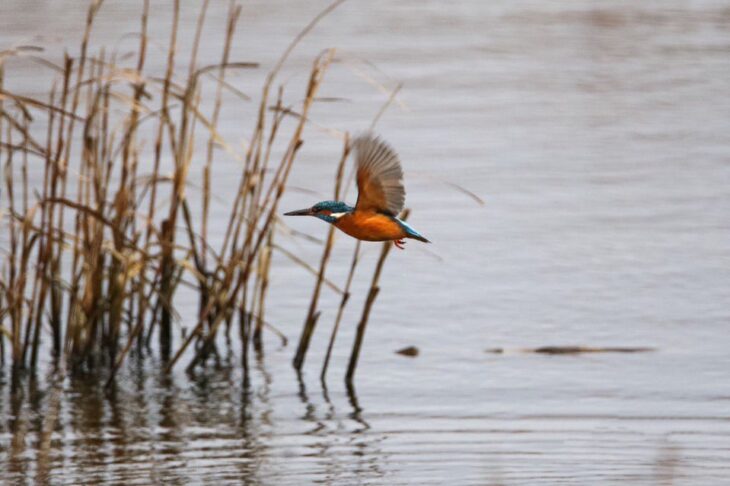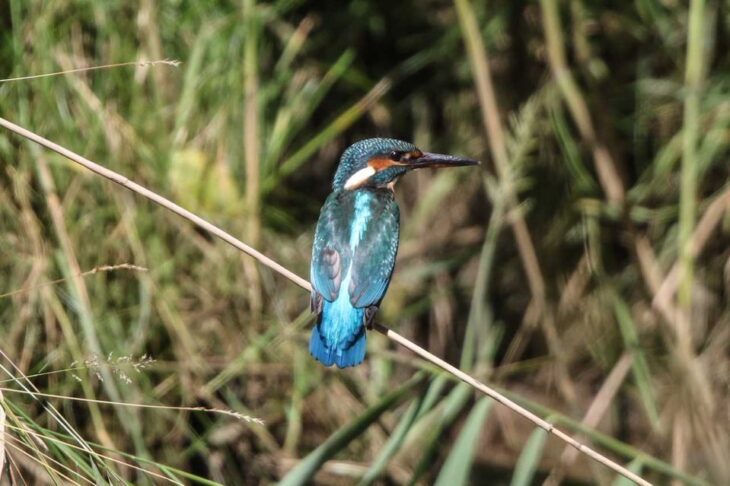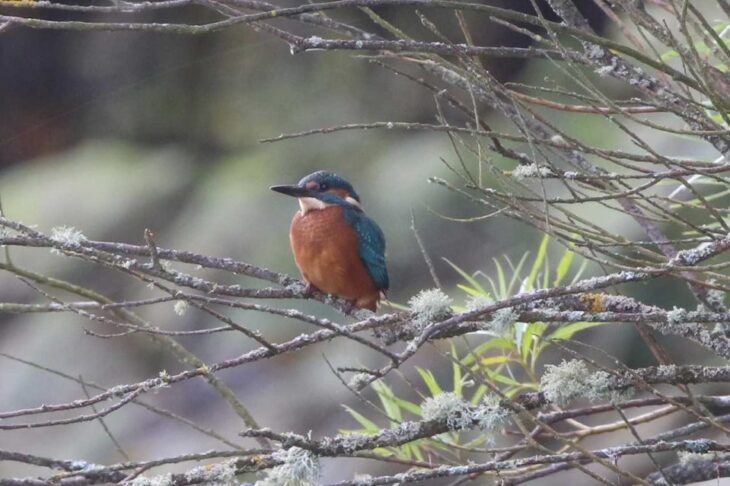How does a kingfisher build its nest?
In this time of drastic change, there’s some comfort to be found in the constant of nature. The worldwide event we’re currently all experiencing has affected every facet of life, but wildlife is continuing on as normal. Travel bans mean nothing to our spring migrants, and social distancing measures certainly don’t exist in the everyday lives of Scottish wildlife (especially now that breeding season has arrived).
Kingfishers are no exception. At this time of year, visitors and staff at the Montrose Basin Visitor Centre are always pondering what our resident kingfisher is up to, regardless of whether or not the centre is open. When she leaves her wintering territory in front of our viewing windows, it’s hard to know where exactly she goes, but she’s likely not too far up the River South Esk, starting to excavate a nesting tunnel in its banks.

Kingfisher Breeding Season Has Begun


Kingfishers typically have 2 or 3 broods of chicks per season, so they have to start preparations promptly. By this point, our resident female kingfisher will have ideally found a mate, which means that the nest-building process can begin! Occasionally, previously used nesting tunnels will be re-excavated, but males will usually create a few different tunnels to impress the female. The whole process can take over a fortnight – a herculean task for a little kingfisher. The male will bravely fly headfirst at the riverbank with his pointed bill a few times to loosen the soil, then once a proper impression has been made, he can perch on the resulting ledge and start gradually digging away. Tunnels can be over a metre long, so it’s not surprising that pairs often ‘take shifts’ and divide up the work between each other. Because the nest tunnel is also quite narrow, the kingfisher has to shuffle backwards out of the hole between shifts, kicking out any loose soil with their tiny feet.
At the end of their tunnel, they dig out a slightly wider, oval shaped egg chamber, which is angled downwards slightly so no eggs can roll out. Kingfishers, like owls, cough up pellets of indigestible material. If a kingfisher brings up a pellet of fish bones and scales while brooding, it may break it apart with its beak and add the material to the nest. Over the next few weeks, this chamber will be filled with up to 7 eggs, and then – once the chicks hatch (incubation is around 19-21 days) – even more fish bones gradually pile up from the many feedings that are required. A dark chamber which is slowly filling with rotting fish doesn’t exactly sound like a ‘home’ to us, but at least it’s safe from predators! When the breeding pair are ready for their next brood, they’ll typically switch to a new tunnel (one that isn’t so fishy).
Artist Robert E Fuller has some impressive footage of kingfishers in an artificial nest bank, for those of you that want to learn even more about their nesting habits.
We’re hoping that despite how challenging things are for humans right now, this year ends up being a successful one for our wildlife. It won’t be until around September that we’re expecting a kingfisher to reclaim its wintering territory in front of the visitor centre. Even if we haven’t returned to normality by that point, the kingfishers won’t know any different.
Joanna Peaker, Visitor Centre Assistant Manager
Help protect Scotland’s wildlife
Our work to save Scotland’s wildlife is made possible thanks to the generosity of our members and supporters.
Join today from just £4 a month to help protect the species you love.
Preface
In this time of drastic change, there’s some comfort to be found in the constant of nature. The worldwide event we’re currently all experiencing has affected every facet of life, …
